
The Royal Regiment of Horse Guards (The Blues) (RHG) was a cavalry regiment of the British Army, part of the Household Cavalry.

Lieutenant-General John Manners, Marquess of Granby, was a British soldier and the eldest son of the 3rd Duke of Rutland. As he did not outlive his father and inherit the dukedom, he was known by his father's subsidiary title, Marquess of Granby.

Field Marshal Sir Robert Rich, 4th Baronet was a British cavalry officer. As a junior officer he fought at the Battle of Schellenberg and at the Battle of Blenheim during the War of the Spanish Succession. He was then asked to raise a regiment to combat the threat from the Jacobite rising of 1715. He also served with the Pragmatic Army under the Earl of Stair at the Battle of Dettingen during the War of the Austrian Succession. As a Member of Parliament he represented three different constituencies but never attained political office.
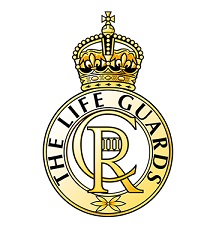
The Life Guards (LG) is the senior regiment of the British Army and part of the Household Cavalry, along with The Blues and Royals.
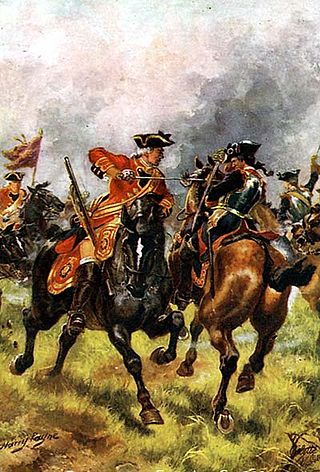
In the British Army, the Horse Guards comprised several independent troops raised initially on the three different establishments. In the late 1660s, there were thus three troops in England, one in Ireland, and two in Scotland of which one was ceremonial for attendance of Lord High Commissioner. In 1707, there were four troops of Horse Guards, and two troops of Horse Grenadiers.
The 1st Troop of Horse Guards was formed from King Charles II's exiled followers in the Netherlands.
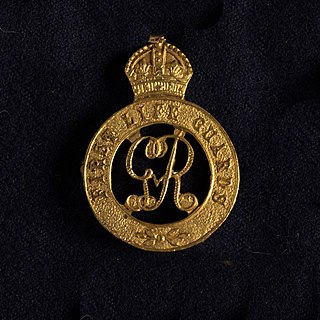
The 1st Regiment of Life Guards was a cavalry regiment in the British Army, part of the Household Cavalry. It was formed in 1788 by the union of the 1st Troop of Horse Guards and 1st Troop of Horse Grenadier Guards. In 1922, it was amalgamated with the 2nd Life Guards to form the Life Guards.
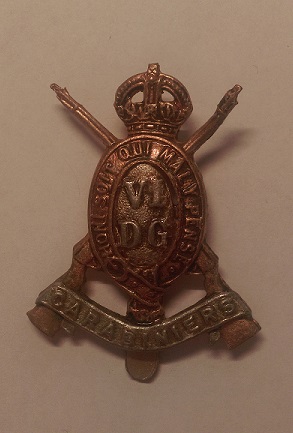
The Carabiniers (6th Dragoon Guards) was a cavalry regiment of the British Army. It was formed in 1685 as the Lord Lumley's Regiment of Horse. It was renamed as His Majesty's 1st Regiment of Carabiniers in 1740, the 3rd Regiment of Horse (Carabiniers) in 1756 and the 6th Regiment of Dragoon Guards in 1788. After two centuries of service, including the First World War, the regiment was amalgamated with the 3rd Dragoon Guards (Prince of Wales's) to form the 3rd/6th Dragoon Guards in 1922.

The 4th Royal Irish Dragoon Guards was a cavalry regiment in the British Army, first raised in 1685 as the Earl of Arran's Regiment of Cuirassiers. It was renamed as the 4th Dragoon Guards in 1788 and service for two centuries, including the First World War, before being amalgamated with 7th Dragoon Guards, to form the 4th/7th Dragoon Guards in 1922.
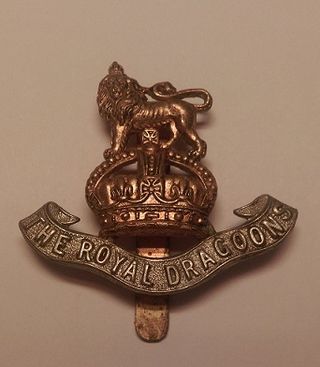
The Royal Dragoons was a heavy cavalry regiment of the British Army. The regiment was formed in 1661 as the Tangier Horse. It served for three centuries and was in action during the First and the Second World Wars. It was amalgamated with the Royal Horse Guards to form The Blues and Royals in 1969.

The 2nd Regiment of Life Guards was a cavalry regiment in the British Army, part of the Household Cavalry. It was formed in 1788 by the union of the 2nd Troop of Horse Guards and 2nd Troop of Horse Grenadier Guards. In 1922, it was amalgamated with the 1st Life Guards to form the Life Guards.

William Drummond, 4th Viscount Strathallan was a Scottish peer and Jacobite, who died at the Battle of Culloden.
Lieutenant-General Thomas Howard, 2nd Earl of Effingham, styled Lord Howard from 1731 to 1743, was a British nobleman and Army officer, the son of Francis Howard, 1st Earl of Effingham.

The 2nd Dragoon Guards (Queen's Bays) was a cavalry regiment of the British Army. It was first raised in 1685 by the Earl of Peterborough as the Earl of Peterborough's Regiment of Horse by merging four existing troops of horse.

The 5th Dragoon Guards was a British army cavalry regiment, officially formed in January 1686 as Shrewsbury's Regiment of Horse. Following a number of name changes, it became the 5th Regiment of Dragoon Guards in 1804.

The 6th (Inniskilling) Dragoons was a cavalry regiment in the British Army, first raised in 1689 as Sir Albert Cunningham's Regiment of Dragoons. One of the regiment's most notable battles was the Battle of the Boyne in July 1690. It became the 6th (Inniskilling) Regiment of Dragoons in 1751. The regiment also fought with distinction in the Charge of the Union Brigade at the Battle of Waterloo and again as part of the successful Charge of the Heavy Brigade against superior numbers at the Battle of Balaclava during the Crimean War. The First World War sounded the death knell for mounted cavalry as it became apparent that technology had moved forward with greater destructive power and made horsed cavalry redundant on the modern battlefield. The British Army reorganised and reduced its cavalry corps by disbanding or amalgamating many of its famous cavalry regiments. The Inniskillings was one of those affected. It saw service for two centuries, including the First World War, before being amalgamated with 5th Dragoon Guards to form 5th/6th Dragoons in 1922.

The 7th Dragoon Guards was a cavalry regiment in the British Army, first raised in 1688 as Lord Cavendish's Regiment of Horse. It was renamed as the 7th Dragoon Guards for Princess Charlotte in 1788. It saw service for two centuries, including the First World War, before being amalgamated with the 4th Royal Irish Dragoon Guards, to form the 4th/7th Dragoon Guards in 1922.
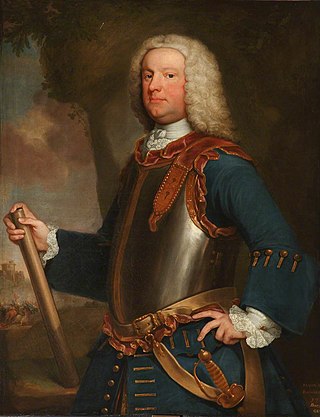
Lieutenant-General Richard Onslow was a British Army officer and politician. After the death of their parents, his older brother Arthur bought him a captain's commission in the British Army. He first saw action in the Anglo-Spanish War in 1727, after which he was returned to Parliament for the family borough of Guildford. His political contributions were negligible in comparison to his brother, and he continued to serve as a career officer, holding commands in the War of the Austrian Succession at Dettingen and Fontenoy. In 1759, he was appointed Governor of Plymouth and commander of the Western District, and died as a lieutenant-general the following year while presiding over two prominent courts-martial.
The 2nd Troop of Horse Guards was originally formed in 1659 for Spanish service as Monck's Life Guards. It was successively renamed 3rd, or The Duke of Albemarle's Troop of Horse Guards (1660), 3rd, or The Lord General's Troop of Horse Guards (1661) and, finally, 2nd, or The Queen's Troop of Horse Guards. It fought at the Battle of Dettingen and, in 1746, absorbed the 4th Troop of Horse Guards. In 1788, it absorbed the 2nd Troop Horse Grenadier Guards and was reorganized to become the 2nd Regiment of Life Guards.
The 4th Troop of Horse Guards was the Scottish unit within the Horse Guards Regiment. It was part of the United Kingdom military establishment from 1709 to 1746, but before the Union of the Parliaments, it had been an independent unit in Scotland, sometimes referred to in modern works as the Scots Troop of Horse. The unit's establishment is usually dated to 1661, although its antecedents extend back to the fifteenth century.

















